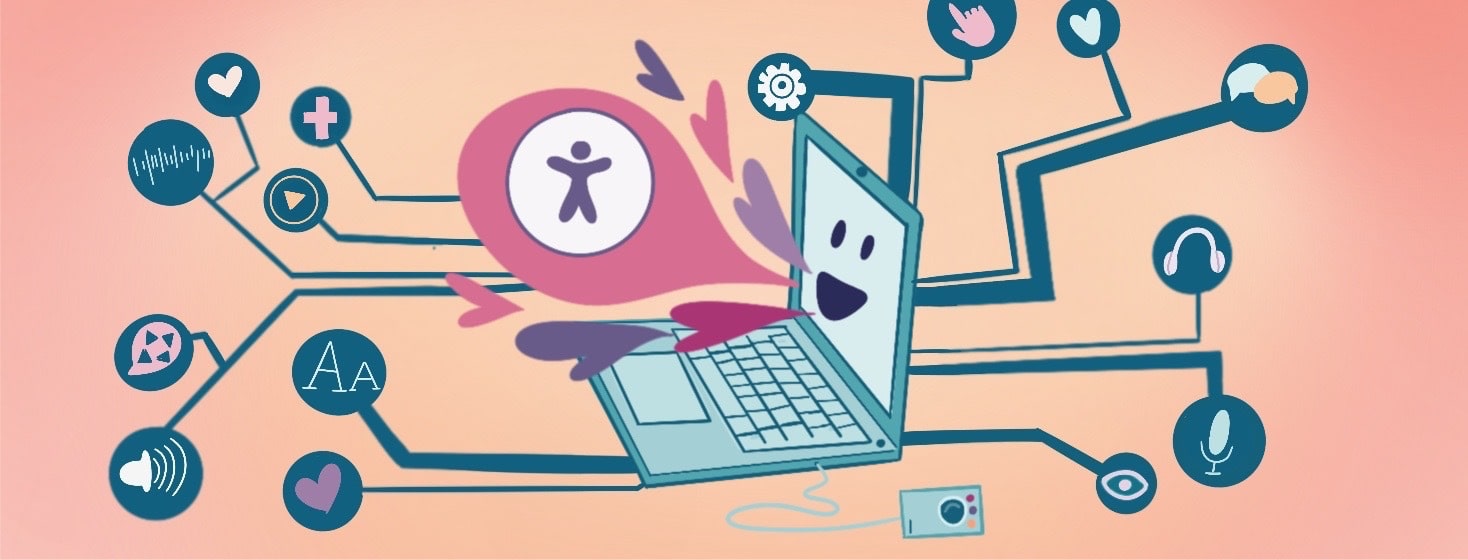Computer Assistive Technology
Reviewed by: HU Medical Review Board | Last reviewed: September 2022 | Last updated: July 2024
Symptoms of spinal muscular atrophy (SMA) can make it hard to use technology. Computer assistive devices and strategies can improve access. They can help people with SMA communicate, maintain independence, and carry out job duties.
More computer assistive technologies are becoming available. Talk to your doctor or SMA support groups about the right devices for you.
What is computer assistive technology?
Computers, cellphones, video games, and other technology are important parts of our lives. These technologies help us:1,2
- Communicate with people outside our homes
- Access remote services
- Carry out job duties
- Access education materials
- Maintain independence
- Socialize and participate in hobbies
Many people with disabilities face challenges using these technologies. For example, it may be hard to use a computer keyboard and mouse. This can limit computer access, independence, and job prospects.2,3
Computer assistive technology can make technologies more accessible. It includes devices, software, and strategies. These can help improve independence and job prospects.2-4
How this technology can help people with SMA
Many people with SMA have muscle weakness and low muscle tone. Devices that need wrist or finger dexterity can be hard to use. This includes a computer keyboard or mouse.2,3
Assistive equipment and software can improve access. They can make it easier for people with SMA to:2,3
- Communicate via text and email
- Write using word-processing programs
- Surf the internet
- Use mobile apps
- Enjoy video games and other hobbies
Everyone with SMA uses technology differently. The right computer assistive technologies depend on your specific needs. Some people may change the default software and hardware. Other people may use specialized software and hardware.5
The right computer assistive technologies may be hard to find. Certain tools may be expensive. They may not work with the equipment you already have. Or they may not be available in the language you need. Talk to your doctor or support groups for help getting the right technologies.5
Featured Forum
View all responsesExamples of computer assistive technologies
Keyboard changes
Computer keyboard changes can make typing more accessible. These include:2,3,5
- Adaptive keyboards that use raised areas between keys, larger keys, or alternate set-ups
- On-screen keyboards to control typing on-screen
Communication assistance
Other technologies can avoid the need to type with keyboards. Some examples include:2,3,5
- Eye-tracking devices to convert eye movement into text
- Voice recognition to convert speech into text on a computer
- Touch screens to allow selections without mouse movements or keyboards
Mouse changes
Mouse changes can make it easier to control on-screen cursors. Some alternatives to a computer mouse include:2,3
- Larger trackball mouse to make it easier to operate
- Mouth sticks to manipulate a trackball mouse
- Head wands to manipulate a trackball mouse
- Sip-and-puff switch to read breathing action to control computers
- Joysticks to control the on-screen cursor
- Electronic pointing devices that use eye movement, brain waves, or ultrasound
Adaptive strategies
Adaptive strategies improve interaction with technology. They can reduce how much you need to type and click on computers. You can use these strategies with standard software and hardware. You can also use them with assistive technology. Some adaptive strategies include:5
- Pop-up blockers to stop pop-up windows that take you away from the page you are looking at
- Shortcuts to reduce typing and clicking
- Keyboard customization to assign shortcuts and set sticky keys (so you can use commands that require multiple keys by activating them in sequence rather than all at once)
- Mouse customization to change mouse sensitivity and set filters
- Word prediction to present selections of words or phrases
Home technology changes
Appliances and other home technology can also be hard to use when you have SMA. Altering home technology may help you maintain your independence. Options include:1
- Doorbell cameras to let you see who is coming and talk to visitors
- Automated thermostats to monitor and control room temperature
- Smart light bulbs to turn lights and other devices on and off
- Smart kitchen appliances to make them easier to use

Join the conversation